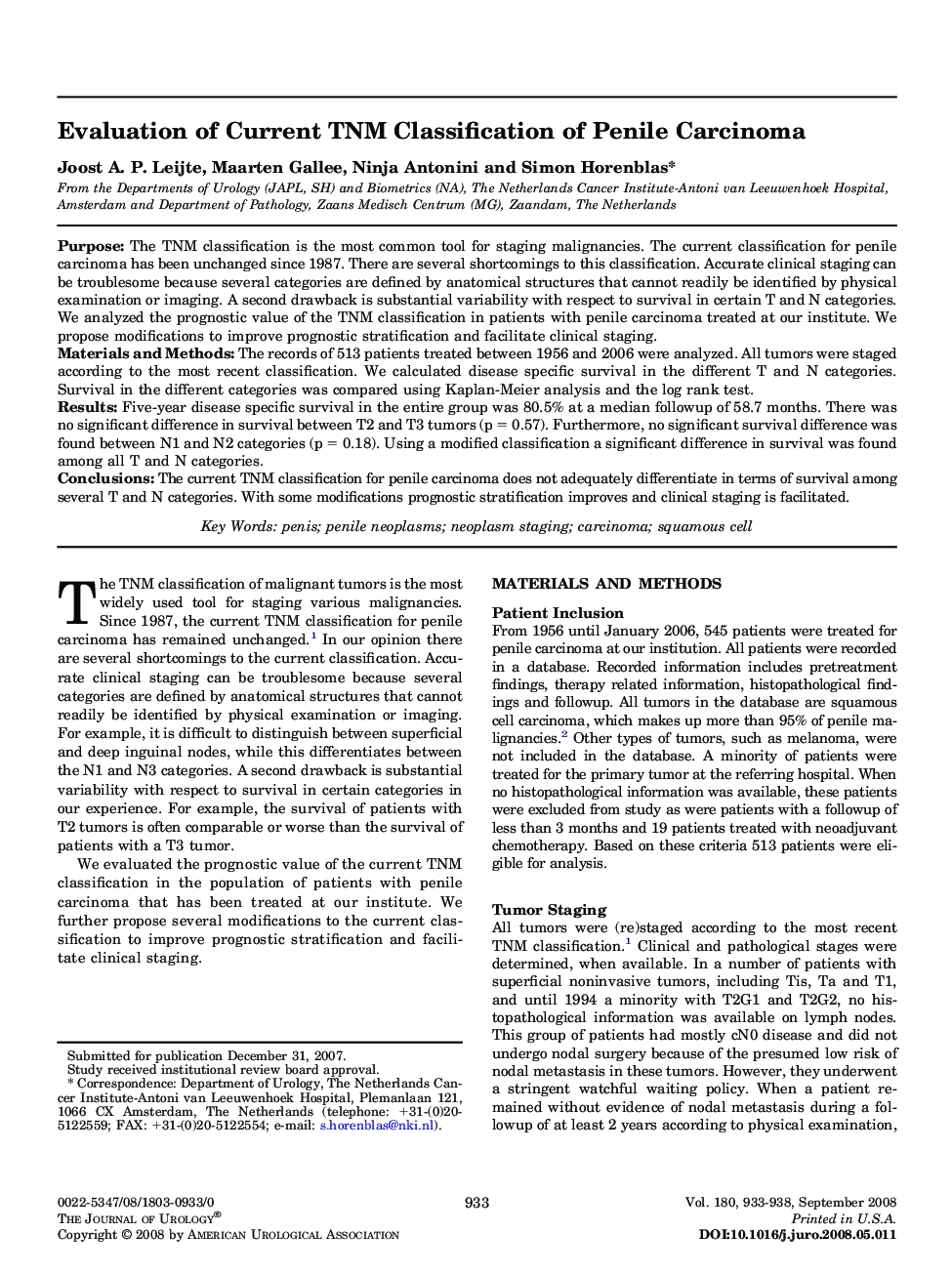| Article ID | Journal | Published Year | Pages | File Type |
|---|---|---|---|---|
| 3872821 | The Journal of Urology | 2008 | 6 Pages |
PurposeThe TNM classification is the most common tool for staging malignancies. The current classification for penile carcinoma has been unchanged since 1987. There are several shortcomings to this classification. Accurate clinical staging can be troublesome because several categories are defined by anatomical structures that cannot readily be identified by physical examination or imaging. A second drawback is substantial variability with respect to survival in certain T and N categories. We analyzed the prognostic value of the TNM classification in patients with penile carcinoma treated at our institute. We propose modifications to improve prognostic stratification and facilitate clinical staging.Materials and MethodsThe records of 513 patients treated between 1956 and 2006 were analyzed. All tumors were staged according to the most recent classification. We calculated disease specific survival in the different T and N categories. Survival in the different categories was compared using Kaplan-Meier analysis and the log rank test.ResultsFive-year disease specific survival in the entire group was 80.5% at a median followup of 58.7 months. There was no significant difference in survival between T2 and T3 tumors (p = 0.57). Furthermore, no significant survival difference was found between N1 and N2 categories (p = 0.18). Using a modified classification a significant difference in survival was found among all T and N categories.ConclusionsThe current TNM classification for penile carcinoma does not adequately differentiate in terms of survival among several T and N categories. With some modifications prognostic stratification improves and clinical staging is facilitated.
